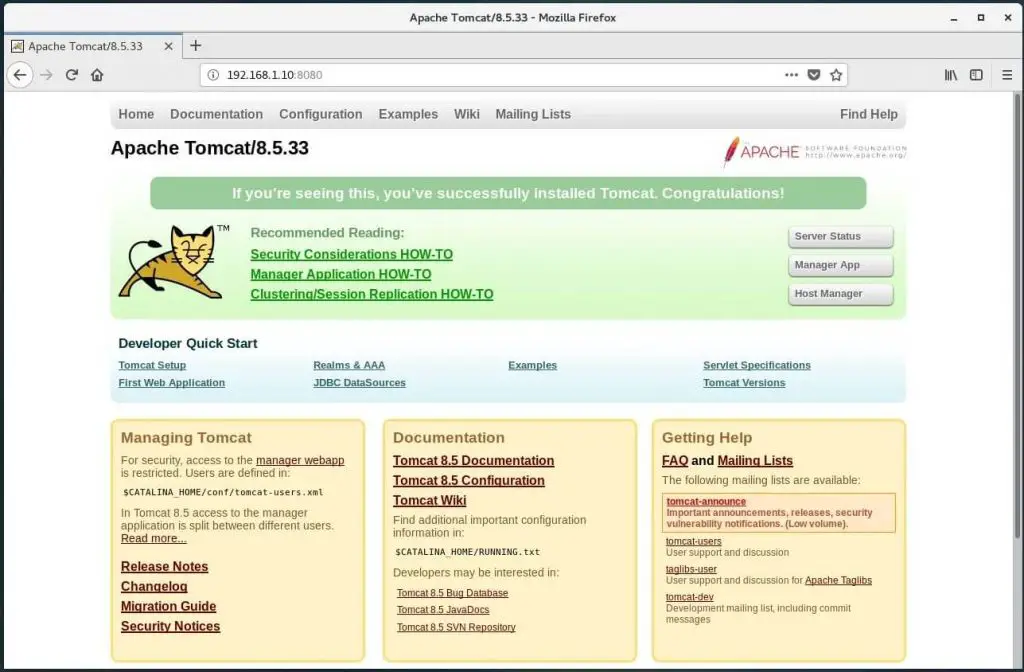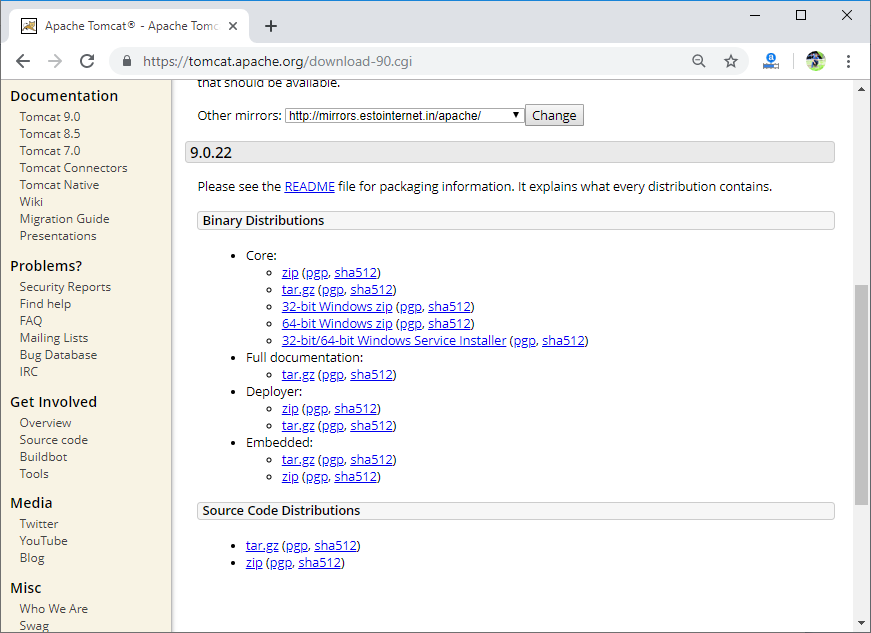

The Manager object controls session replication. Once your nodes are running, you know they will function in a cluster, and if they don't then something is wrong with your clustering configuration.Īfter creating the "Cluster" object and making your web applications distributable, both shown previously in this blog, we need to move on to configuring other settings. You need all of the instances, whether there is 2 or 500, to run properly without being in a cluster. The first step is configuring your Tomcat 7 instances. Whether you are creating a large cluster or a small cluster, the basics are the same. The main difference will be the method of session replication. If you need a small cluster, of about one to six nodes, it will be configured differently. If you need a large cluster, either because you have memory and processor intensive applications that need multiple servers, or because you serve millions of requests a day, you need to set it up differently than you would a small cluster. Only you can figure out what kind of cluster configuration you need. How many users do I have? How many simultaneous requests do I need to be able to serve? How many applications am I running? What resources are available on our servers for these applications? The list goes on and on. There are certain questions you need to ask when setting up the cluster for your organization. This means, any other nodes that are using the same multicast address and port will see this cluster / node. The server will be set up with a default multicast ip address of 228.0.0.4 and a multicast port of 45564. Therefore, if application A stores session data for a user, and application A is running on server A, but not server B, session data will replicate to server B, even though there is no use for it there.ĭefault multicast setup means the cluster is discovered and maintained via multicast heartbeats.

If you recall from last month's blog, a heterogeneous configuration is one that does not have all of the same applications on every node. If you application creates session data for a user, and you have a heterogeneous cluster, the session data will still be replicated across the other nodes. Note on Default SettingsĪll to all session replication means any session data created on a server will be duplicated to all other servers in the cluster. This tells Tomcat that this application is designed to run on multiple nodes in this cluster.
#Tomcat 7 vs tomcat 8 code#
To achieve this we add the following code to the web.xml: The idea behind propagation is: an application is placed on one "node" in the cluster, it is migrated (copied) automatically to other nodes in the cluster. With your cluster running, placing a normal application on one server will not trigger propagation to other servers.
#Tomcat 7 vs tomcat 8 install#
Before we create the next instance we should install the application we want to test on this cluster. You have created a clustered instance, but you only have one instance, so it is not a very big cluster. This would be great if you were not in an enterprise setting. Īdding this line to your configuration enables clustering with all of the default settings. To turn on clustering in your Tomcat server all you have to do is add one line of code to your server.xml. However, if you wish to leverage clustering in your enterprise environment, the default configuration is not going to be the best route for you. Tomcat 7 clustering is very simple to setup. Settings for the connectors in your server configuration files can be found at the Apache Tomcat 7 website. The configuration of these tomcat instances is well outside the scope of this document, although it is not difficult to accomplish. Note: You can run multiple tomcat instances on a single virtual/physical machine by tweaking a just few settings, mainly port numbers so the instances don't interfere with each other. To limit the liability of your attempt at creating a cluster, you can set up a machine, virtual or physical, just for this task. Whether you have created many Tomcat clusters in the past or this is your first attempt, we hope that you will be able to learn something, whether it be basic or advanced, from this blog. Here's how to create your own Tomcat 7 cluster. STACK BUILDER Apache Tomcat 7 Clustering Tutorial But what about your other open source needs? Use our open source stack builder to build the ultimate stack to empower your organization.

Tomcat is just one part of your open source stack. More recent versions of Tomcat include Tomcat 8 and Tomcat 9. Tomcat 7 is a version of Apache Tomcat released in 2011. Here, we give an overview of Apache Tomcat 7, including: Apache Tomcat is a popular open source web application server.


 0 kommentar(er)
0 kommentar(er)
